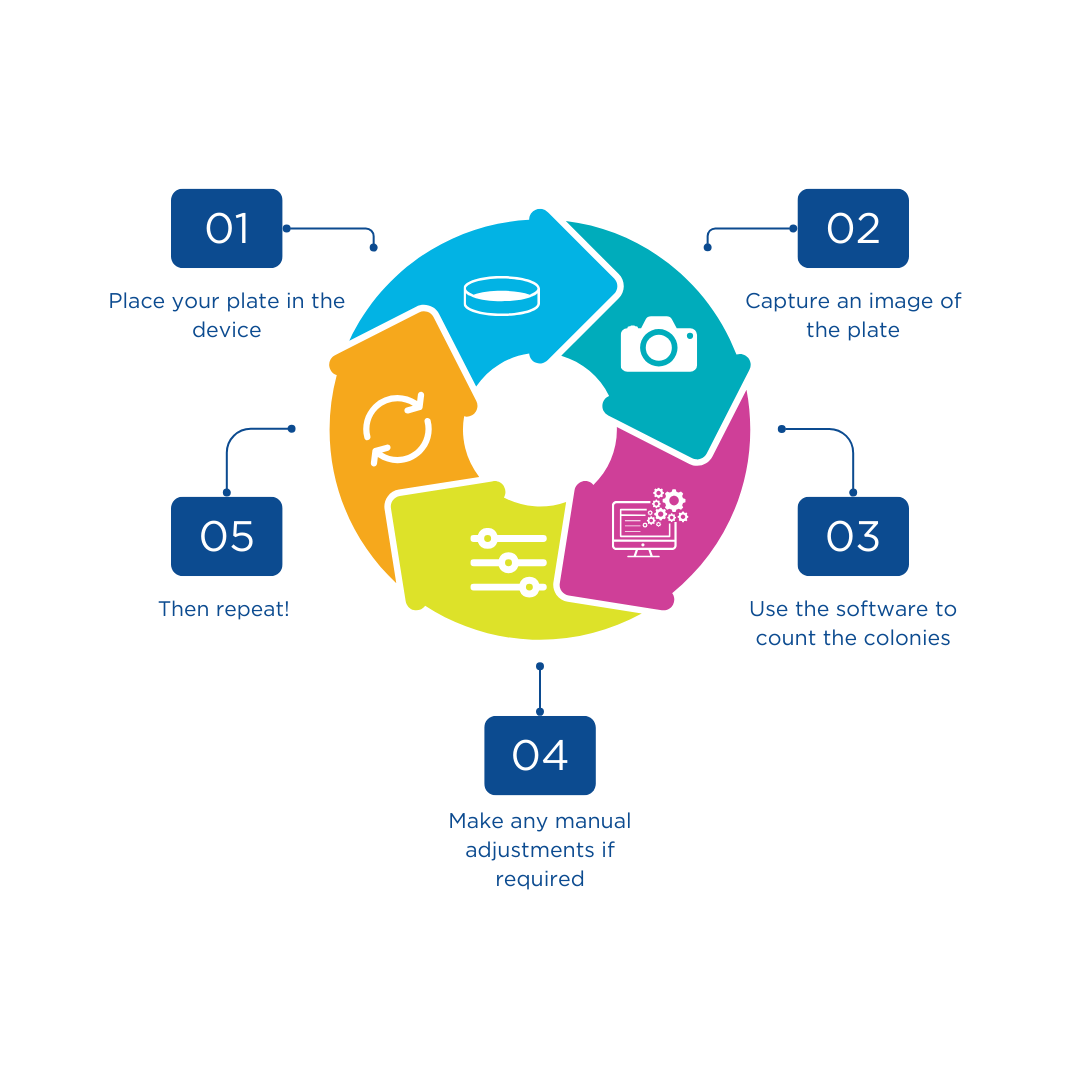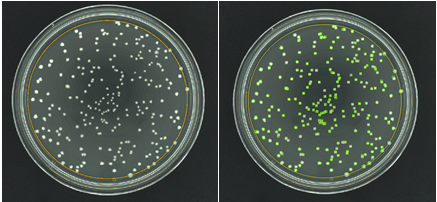At Synbiosis, we specialise in making automated colony counters, inhibition zone measurement systems and generally assisting you with microbiology practices. But how do our automated colony counters work? And why are they useful in your laboratory?
What is automated about it?
The ‘automated’ part of ‘automated colony counting’ doesn’t necessarily refer to the automated loading of a robotic system like other scientific devices but is in reference to the automated counting of the colonies, which is handled by our software and hardware working together.
If you are interested in a fully automated system, the AutoCOL processes 100 plates an hour. Most of our other units still involve placing plates in a device, but that’s all you have to do. The rest is where the ‘automated’ part comes into its element.
How does it work?
Laboratories worldwide employ staff members to sit down with a marker pen and a tally counter to calculate the number of colonies on hundreds of plates in one shift. Well, with Synbiosis, there’s a better way! Automated colony counters follow this simple workflow:

We develop systems and software that perform these steps with a user-friendly interface.
Synbiosis has created a unique way to capture images, providing smooth lighting across the plate and emphasising the contrast between the agar and the colonies, which is imperative for optimal colony counts. Variations in backgrounds, lighting, and exposure mean all plate types can be catered for when it comes to colony counting.
Once you’ve captured your image, the automated colony counting software comes into its own. All our software is built in-house by our dedicated software team and is free with the system, along with all the updates! The coded counting algorithm allows users to personalise using simple and straightforward settings. These options allow you to reject any particles that are below a certain size, which is super useful for removing debris from a plate count.
You can alter the algorithm’s sensitivity if you have some fainter colonies on the plate that need recognising, and you can also split colonies that touch one another. This flexibility means automated colony counters can count bacteria, fungi, and moulds across all types of agars.
How Fast?!
One key benefit of automated colony counting is the speed at which it counts plates. Counting thousands of colonies on a plate only takes a few seconds, saving time on every plate. This is vital in freeing up these employees for other workplace tasks, such as analysis and preparation.
A slight misconception about automated colony counters is that computers and their software can achieve perfection. Unfortunately, this isn’t the case; colonies can come in infinite shapes, sizes, colours, and consistencies. While algorithms in automated colony counters try their hardest, they are not yet as intuitive as the human eye. This is why it is essential to have the option to edit your plates once the initial count is complete.
Editing plates is as simple as clicking on colonies in the image that the software might have missed or removing ones it erroneously picked up. It’s that simple and takes a matter of seconds. If you link up a couple of seconds for the initial analysis and then a few more seconds for any manual edits, you are still counting a plate in seconds rather than minutes.

Images of a pour plate before and after analysis in ProtoCOL 3
Beyond speed
While the timesaving achieved by automating your colony counts is invaluable, there are other reasons why automated systems are essential.
In modern laboratories, there are demands beyond our excellent product performance. Synbiosis automated systems aim to meet these:
Put simply, there is much more to automated colony counters than speed and accuracy. You’ve got the traceability, consistency, and reliability of a machine that produces the colony counts you require with no chance of transcription errors and finishes with a clear, concise, and customisable report.
If you like the sound of automating your colony counts, have a plate type you think will be a challenge for us or want some further information about Synbiosis products and how we could be of assistance to your lab, then please don’t hesitate to get in contact with our sales and product specialist team at sales@synbiosis.com
